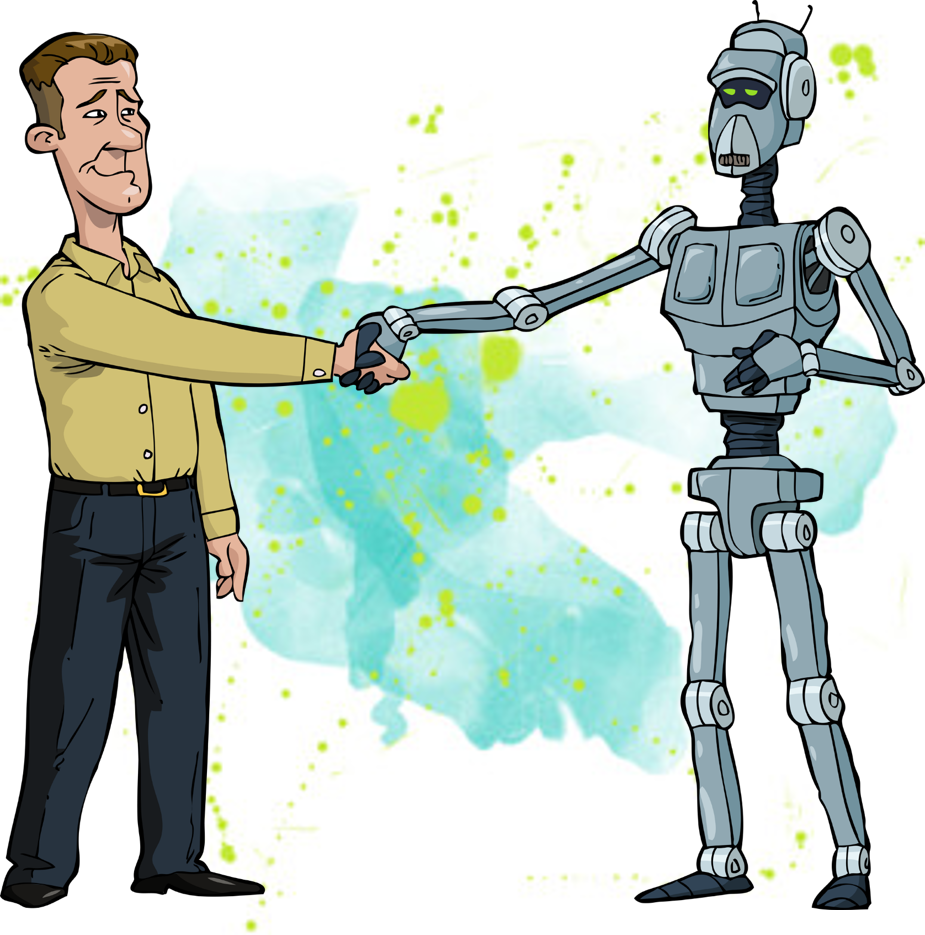According to tradition, in 1775, Paul Revere rode from Boston to surrounding areas hollering, “The redcoats are coming! The redcoats are coming!” It was a warning to people that revolution was in the air. Many of today’s headlines scream similar warnings about artificial intelligence (AI) and robots coming to take jobs. An AI revolution is in the air. Microsoft analysts assert, “Anyone who works in the technology field is likely to say that with today’s lightning-fast pace of change, no-one really knows how technology will change business over the next 10 years.”[1] Nevertheless, there seems to be a growing consensus that, in the years ahead, AI and automation will augment rather than replace humans in the workplace. Yesh Surjoodeen, device sales lead at Microsoft SA, asserts, “Building upon the birth of internet-enabled telecommunications systems, Industry 4.0 promises a new level of collaboration between man and machine.” Among the technologies Surjoodeen asserts will have a major impact in this age of automation are: mass data exchange, proliferation of cyber-physical systems, the Internet of things (IoT), and cognitive computing (a form of artificial intelligence).
AI and automation in the workplace
Former IBM executive Irving Wladawsky-Berger notes, “People have long feared that machines are coming for our jobs. … Automation anxieties have understandably accelerated in recent years, as our increasingly smart machines are now being applied to activities requiring intelligence and cognitive capabilities that not long ago were viewed as the exclusive domain of humans.”[2] Humans, however, are remarkably resilient creatures and will undoubtedly learn to adapt to a new work environment. The question, according to Wladawsky-Berger, is: Can humans adopt fast enough? He explains, “Our problem is not that there won’t be enough work in the future. Our key problem is that, in many countries, the workforce is not prepared for our fast unfolding future.” As in the past, he notes, technology will likely create more jobs than it eliminates. He points to a McKinsey & Company study that concluded, “A growing technology-based economy will create a significant number of new occupations which will more than offset declines in occupations displaced by automation. However, ‘while there may be enough work to maintain full employment to 2030 under most scenarios, the transitions will be very challenging — matching or even exceeding the scale of shifts out of agriculture and manufacturing we have seen in the past.'” In other words, humans will find themselves collaborating with new technologies but the transition to a new work environment is going to be disruptive.
In a follow-on article, Wladawsky-Berger insists, “The demand for workers who are good at complex problem-solving, interactions with clients and colleagues, and able to adapt to new tools and technologies is rising, while the demand for less advanced skills that can be replaced by technology is declining. Neglecting investments in human capital can dramatically weaken a country’s competitiveness.”[3] All stakeholders (i.e., employers, employees, governments, and academia) all have a role to play if civil societies are going to transition peacefully into this new economic reality. Wladawsky-Berger cites World Bank Group President Jim Yong Kim who wrote in Foreign Affairs, “With technological progress placing a premium on higher-order skills, the failure of countries to lay the groundwork for their citizens to lead productive lives will not only carry high costs; it will also likely generate more inequality. It will put security at risk, too, as unmet aspirations can lead to unrest.” Maciej Duraj (@duraj_maciej) believes it’s a mistake for employees to sit back and wait to get transitional help. He explains, “Many companies … are not willing to take the time or spend the money on their workforces. It may be up to the employees themselves to keep up with the skills and trends related to AI. The perception of AI being a job killer is … changing as people realize that it may in fact make their working lives easier rather than compete for the same tasks.”[4]
Promoting human/machine collaboration
Frank Chen (@withfries2), a Partner at Andreessen Horowitz, believes the scare-mongering stories about AI making humans redundant promote a false future. He explains, “The counter-narrative I want to offer to the mainstream, front page accounts is that with careful, thoughtful, empathic design, we can enable ourselves to live longer, safer lives. We can create jobs where we are doing more creative work. We can understand each other better.”[5] Chen is thoroughly convinced humanity is better off because AI is maturing. He concludes, “It’s now up to all of us together to harness this tremendous energy to benefit all humanity. With thoughtful, careful, and compassionate design, we can really make ourselves more creative, better decision makers, live longer, gain superpowers in the physical world, and even understand each other better.” It’s important to note that Chen doesn’t believe this bright future will emerge on its own. It will take “thoughtful, careful, and compassionate design.” Stakeholders should be asking themselves how AI and automation can make humans better rather than how they can replace humans. According to Clint Boulton (@ClintBoulton) some companies are already asking that question. He reports, “The pushback against automation technologies in the workplace hinges on the use of robots to do humans’ jobs. But enlisting robots to help humans perform their work is another matter — one that enterprises are pursuing in myriad ways.”[6] He continues:
“Many CIOs streamline business processes using robotic process automation (RPA) to eliminate manual data entry, allowing them to reallocate employees to other tasks that drive business value. AI augmentation, a combination of human and artificial intelligence, will generate $2.9 trillion in business value and recover 6.2 billion hours of worker productivity by 2021, according to Gartner. At the center of strategies such as these is the pursuit of productive human-machine collaboration, rather than the more dystopic vision of physical robots, AI and other technologies eliminating jobs.”
Chen concludes, “While machine learning software has much promise in making us better humans, we won’t get there without being intentional, deliberate, and empathic.”
Concluding thoughts
Some pundits, like Chen, argue AI will help make us more rather than less human. By that they mean human traits will become important in the years ahead as AI and automation take on the more robotic tasks humans have had to do in the past. Chen explains, “Thinking about how to prepare future generations for those jobs, I am reminded of a book popular when I was growing up. The book was written by a minister named Robert Fulghum and is called Everything I Needed to Learn I Learned in Kindergarten. In the book, he argues that the values we should nurture in our kids are human values: empathy, fair play, learning how to get along with other people, saying sorry, imagination and so on. While I know that we’ll need to layer on top of that foundation a set of practical and technical know-how, I agree with him that a foundation rich in EQ and compassion and imagination and creativity is the perfect springboard to prepare people — the doctors with the best bedside manner, the sales reps solving my actual problems, crisis counselors who really understand when we’re in crisis — for a machine-learning powered future in which humans and algorithms are better together.” If we get things right, when someone shouts, “AI is coming! AI is coming!” it won’t be a warning but an excited announcement of a better future.
Footnotes
[1] Microsoft, “Industry 4.0 promises a new level of collaboration between man and machine,” ITWeb, 11 February 2019.
[2] Irving Wladawsky-Berger, “Human Capital and the Changing Nature of Work,” The Wall Street Journal, 2 January 2019.
[3] Irving Wladawsky-Berger, “The Future of Work Requires Investments in Human Capital,” The Wall Street Journal, 4 January 2019.
[4] Maciej Duraj, “AI Set To Augment Traditional Workforce With Tools & Innovations Rather Than Replace It,” Forbes, 24 February 2019.
[5] Frank Chen, “Humanity + AI: Better Together,” Andreessen Horowitz, 22 February 2019.
[6] Clint Boulton, “Retail robots prove power of human-machine collaboration,” CIO, 25 February 2019.





